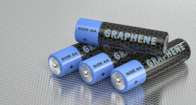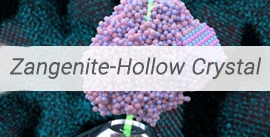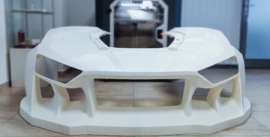 جدید
جدیدآیا گرافن بی خطر است؟
آیا گرافن بی خطر است؟
[box type=”shadow” align=”alignright”]
تقریبا اجتنابناپذیر است که اختراع یا اکتشاف یک مادهی جدبد با ایجاد ترس در رسانههای مصور همراه باشد. این ایجاد ترس اغلب بر پایهی تعداد محدودی آزمایش یا هشدارهای ایمنی توسط محققان آن زمینه انجام میشود. بنابراین، بررسی موشکافانه و دقیق گرافن پس از ظهور به عنوان یک مادهی شگفتانگیز با استحکام عالی، ضخامت با اندازهی تقریبا صفر و خواص نوری و الکترونیکی اعجابآور و البته دارا بودن خواص نوری-الکترونیکی، قطعی بود. پرسشها درمورد ایمنی یا به عبارت دیگر گرافن باید بصورت پیشبینیشدهای بوجود میآمدند به ویژه همین که از عبارت نانو ذکر میشد.
برای دانستن رازهای این ماده این گروه تحقیقاتی، آلیاژ را با میکروسکوپ الکترونی عبوری (TEM) در هنگام اعمال کرنش به ماده مطالعه نمودند. تصاویر نشان داد که چندین مکانیزم در مقیاس نانو، یکی پس از دیگری در آلیاژ فعال می شوند که همراه با هم در مقابل گسترش آسیب مقاومت میکنند. در میان این مکانیزم ها، پله ایی هستند که در عرض ترکها برای جوگیری از انتشار آنها تشکیل می شوند. این پل سازی روی ترک، یک مکانیزم مرسوم چقرمه سازی در کامپوزیتها و سرامیک هاست اما غالبا در فلزات تقویت نشده، دیده نمی شود.
مزایا و کاربرد باتری گرافن چیست؟ و چگونه ساخته میشود؟
باتریهای گرافن ساختاری مشابه باتریهای معمولی دارند که از یک محلول الکترولیت و ...یافته های آنها میتواند پژوهش های آینده را به سمت طراحی موادی فلزی با تلرانس آسیب نامنطبق هدایت نماید. این پژوهش در نشریه Nature Communications موجود است.
در علم مواد، چقرمگی، مقاومت یک ماده را در برابر شکست توصیف میکند در حالی که استحکام، مقاومت یک ماده در برابر تغییرشکل است. اینکه یک ماده هم بسیار چقرمه باشد و هم مستحکم بسیار نادر است اما CrMnFeCoNi یک آلیاژ عادی نیست. این آلیاژ یک ستاره در میان کلاس جدید آلیاژهای توسعه یافته در حدود یک دهه قبل است که دارای ۵ عنصر یا بیشتر با مقدارهای تقریبا برابر است. در مقابل، بیشتر آلیاژهای معمولی یک عنصر غالب دارند. این آلیاژهای چندجزئی جدید آلیازهای با آنتروپی بالا نامیده میشوند زیرا عمدتا از یک فاز محلول جامد ساده تشکیل میشوند و بنابراین آنتروپی اختلاط بالایی دارند.
آلیاژهای با آنتروپی بالا موصوعی داغ در پژوهش مواد هستند اما تنها به تازگی به مقدار مناسبی پژوهش درباره انها انجام شده است. در ۲۰۱۴، ریچی و همکارانش دریافتند که در دماهای بسیار کم، هنگامی CrMnFeCoNi که تغییرشکل می دهد، پدیدهای بنام دوقلویی رخ میدهد که در آن مناطق بلوری همسایه، آرایشی آینه ای نسبت به یکدیگر تشکیل می دهند. دوقلویی احتمالا در چقرمگی و استحکام شگفت انگیز آلیاژ نقش ایفا میکند. اما دوقلویی بطور گستردهای در این آلیاژ در دمای اتاق یافته نمی شود (بهجز در پلهای روی ترک) در حالی که چقرمگی و استحکام آلیاژ همچنان، تقریبا بسیار بالا است.
ریچی میپرسد: اگر ما دوقلویی را در دمای اتاق نمیبینیم پس چه مکانیزمهای دیگری باعث این خواص شگفت انگیز در آلیاژ میشوند؟ برای یافتن پاسخ، دانشمندان آلیاژ را در معرض آزمایشهای کرنشگذاری متعددی در دمای اتاق قرار دادند و از TEM برای مشاهده اتفاقات استفاده کردند.
تصویربرداری در مرور زمان، دو پدیده مربوط به تنش برشی را نشان دادند: حرکت آهسته نابجاییهای کامل که باعث استحکام ماده میشوند و حرکت سریع نابجاییهای جزئی که داکتیلیته را بهبود م یدهند. انها همچنین پدیدهای درباره نابجاییهای جزئی با عنوان ” عیوب نقص چیدمان سه بعدی” مشاهده نمودند که شامل تغییراتی در آرایش سه بعدی اتم ها در آلیاژ می شود. این نقایص مانند قرار دادن یک تودهای آجر در برابر یک شکاف در حال رشد، مانع بزرگی برای نابجایی ها هستند و آلیاژ را سخت می کنند.
تصاویر همچنین نسخه نانومقیاسی از جویدن یک تافی دهانپرکن که باعث جسبیدن دندانها به یکدیگر میشود، بدست آوردند: در برخی موارد، پلهای کوچک تغییرشکل یافته توسط دوقلویی در عرض یک ترک ایجاد می شوند که به جلوگیری از پهنتر شدن ترک کمک می کنند. ریچی میگوید: این پلها در سرامیکها و کامپوزیت های تقویتشده مرسوم هستند. پژوهش ما نشان داد که همه این مکانیزم ها در مقیاس نانو با هم عمل میکنند تا باعث چقرمگی و استحکام آلیاژ شوند.
[box type=”info” align=”alignright” width=”1124″]منبع : materialstoday
ترجمه : حمیدرضا شهمیری [/box]
[divider]
?Is graphene safe
It is almost inevitable that the invention or discovery of a new material will be accompanied by scaremongering in the tabloid media often based on some limited tests or safety alert from researchers in the field. So, the emergence of graphene as some kind of wonder material with its great strength, size-almost-zero thickness and its fascinating optical and electronic, and, of course, optoelectronic, properties was bound to come under scrutiny. The question of the safety or otherwise of graphene was predictably going to arise especially once the notion of nano was mentioned.
Graphene has become the focus of much research since, in 2004, Andre Geim and Konstantin Novoselov of the University of Manchester, England, found they could tear a strip off using nothing more sophisticated than sticky tape, a glass slide, and a pencil. The material exists as standalone atomic monolayers of carbon arranged in the familiar hexagonal pattern of graphite that resembles chicken wire fencing, providing many a useful metaphor for a science media keen to discuss the substance. Graphene is transparent, flexible, very strong, and has already been used to create fast transistors.
But, it is the very nature of graphene that might be cause for concern: thin and lightweight, yet tough and intractable particles are notoriously worrisome in terms of the detrimental effects they can have on our health, particularly when breathed in. The negative press novel materials get often references asbestosis and the malignant mesothelioma it causes or the silicosis of exposure to silicon dust and pneumoconiosis caused by coal dust.
Certainly, we must be cautious of the release of novel materials, particularly those that lie in the brave new world of nano where bulk properties seem to fade from view yet the atomic and molecular properties are not quite manifest. On this scale, phenomena emerge that might not be predicted based on bulk or molecular properties.
Ken Donaldson is a respiratory toxicologist at the University of Edinburgh and he and his colleagues are among the first to raise the warning flag on graphene, at least for nanoscopic platelets of the material. It is not too great a leap of the imagination to imagine how such tiny flakes of carbon might be transported deep within the lungs similar to asbestos fibres and coal dust. Once lodged within, there is no likely mechanism for the removal or break down of such inert particles and they might reside on these sensitive tissues triggering a chronic inflammatory response or interfering with the normal cellular functions.
The problem with graphene flakes, according to Donaldson and colleagues, is that although they might be labelled as being a few dozen micrometres across on the shipping container from a supplier, these platelets can behave as if they were much smaller. Our bodies can usually filter particles quite effectively, but these particles behave in ways that allow them to slip past the filters and once inside can be too big for white blood cells to engulf.
Writing in the American Chemical Society journal ACSNano Donaldson and colleagues have used a model of pharyngeal aspiration to demonstrate that graphene nanoplatelets are most certainly “respirable and so would deposit beyond the ciliated airways following inhalation.” In vitro tests also showed that these particles trigger the inflammatory response in lung cells and those found in the pleural space. Intriguingly, the immune response is not seen with nanoparticulate carbon black.
Earlier in 2011, Sanchez and colleagues reviewed the limited research published on graphene’s putative toxicity. They suggested that, “biological response will vary across the material family depending on layer number, lateral size, stiffness, hydrophobicity, surface functionalization, and dose.” They also posited that graphene might produce reactive oxygen species in target cells or interfere with membrane lipids because of its extremely high hydrophobic surface area.
Moreover, as with asbestos and coal dust, and other smooth, continuous, biopersistent particles that can enter the body, graphene may have the ability to instigate tumour growth, they say. At the time, that team emphasized that, “Complete materials characterization and mechanistic toxicity studies are essential for safer design and manufacturing of [graphene materials] in order to optimize biological applications with minimal risks for environmental health and safety.”
Donaldson’s work takes us another step forward in providing such characterisation. “Our data suggest that nanoplatelets pose a novel nanohazard and structure-toxicity relationship in nanoparticle toxicology,” the Edinburgh team concludes.
Andrew Maynard, Director of the Risk Science Center at the University of Michigan is not entirely convinced that there is an issue. “Donaldson’s work certainly demonstrates the potential for graphene flakes to present a health risk if they are able to be inhaled and enter the lungs, or penetrate to the region surrounding the lungs. But that is a big ‘if’,” he told Materials Today. Pharyngeal aspiration delivers particles – or platelets flakes – to the lungs within liquid droplets and the droplets determine where the material is deposited. “This allows early experimentation on what could occur if the material could enter the lungs under handling and use,” Maynard adds. “But it doesn’t provide information on the plausibility of exposure occurring.” We do not yet know whether graphene flakes can become airborne and inhaled in a form that is dangerous during use.” Questions concerning health risks – while important – remain speculative,” Maynard says.
Further Reading
[۱] Donaldson et al. ACS Nano, 6 (1) (2012), p. 736
[۲] Sanchez et al. Chem Res Toxicol, 25 (1) (2012), p. 15











دیدگاه کاربران